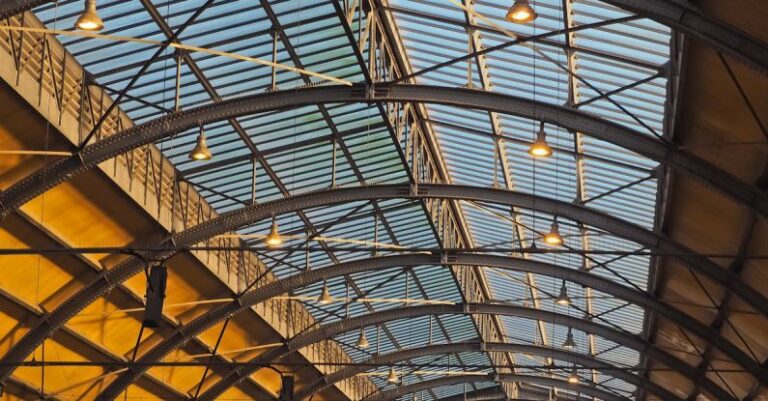
In today’s interior design landscape, the fusion of industrial and modern styles has become increasingly popular. This unique blend offers a harmonious balance between raw, utilitarian elements and sleek, contemporary finishes. Achieving this balance requires careful consideration and a thoughtful approach to ensure that both styles complement each other seamlessly. By understanding the key elements of each style and how they can work together harmoniously, you can create a space that is both visually striking and functional.
Embracing Industrial Elements
Industrial style is characterized by its rugged, unfinished look, often incorporating elements such as exposed brick walls, metal piping, and reclaimed wood. To infuse your space with industrial charm, consider incorporating these elements in a way that adds texture and visual interest. Exposed brick walls can serve as a focal point, adding warmth and character to a room, while metal piping can be repurposed as unique shelving or lighting fixtures. Reclaimed wood furniture pieces can bring a sense of history and authenticity to the space.
Incorporating Modern Touches
On the other hand, modern style is known for its clean lines, minimalistic approach, and emphasis on functionality. To introduce modern elements into your industrial space, opt for sleek furniture pieces with simple silhouettes and a neutral color palette. Consider adding contemporary artwork or accessories to bring a pop of color and contrast to the space. Lighting fixtures with a modern design can also help tie the two styles together, creating a cohesive look that is both stylish and functional.
Creating a Cohesive Color Scheme
When blending industrial and modern styles, choosing the right color scheme is key to achieving a harmonious balance. Neutral colors such as white, gray, black, and beige serve as a perfect backdrop for both styles, allowing industrial elements to shine while providing a clean, modern aesthetic. Introduce pops of color through accessories such as throw pillows, rugs, or artwork to add visual interest and personality to the space. Consider incorporating metallic accents such as brass or copper to add a touch of luxury and sophistication to the overall design.
Mixing Materials
Another important aspect of balancing industrial and modern styles is the mixing of materials. Combining different textures such as metal, wood, glass, and concrete can add depth and dimension to a space, creating visual contrast and tactile interest. For example, pairing a sleek glass dining table with metal chairs or a rustic wooden coffee table with a contemporary sofa can create a dynamic interplay of materials that enhances the overall design. Experiment with different combinations to find the right balance that speaks to your personal style and preferences.
Finding the Right Furniture Pieces
When selecting furniture for your industrial-modern space, opt for pieces that marry the characteristics of both styles. Look for furniture that combines raw, natural materials with clean, modern lines to create a cohesive look that is both inviting and stylish. Consider investing in statement pieces such as a leather sofa with metal legs or a reclaimed wood dining table with a minimalist design. Mixing vintage finds with contemporary furniture can also add a sense of eclecticism and personality to the space, making it feel curated and unique.
Accessorizing with Purpose
Accessories play a crucial role in tying together industrial and modern styles in a space. Choose decor pieces that complement the overall design aesthetic and serve a practical purpose. Industrial-style lighting fixtures, such as exposed bulb pendants or metal sconces, can add a touch of industrial charm while providing ambient lighting. Modern artwork or sculptures can inject a contemporary flair into the space, serving as focal points that draw the eye and spark conversation. Remember to edit your accessories carefully, opting for quality over quantity to maintain a sense of cohesion and balance in the design.
Achieving a Sense of Balance
When blending industrial and modern styles in your space, the key is to achieve a sense of balance between the two aesthetics. Avoid overwhelming the space with too many industrial or modern elements, and instead, focus on creating a cohesive design that highlights the best of both styles. Pay attention to scale, proportion, and visual weight when arranging furniture and decor items to ensure a harmonious flow throughout the space. Embrace the inherent contrasts between industrial and modern styles, using them to create a dynamic and visually engaging environment that reflects your personal taste and style.
In the end, finding the perfect balance between industrial and modern styles is about creating a space that feels authentic, inviting, and visually compelling. By understanding the key elements of each style and how they can work together harmoniously, you can design a space that is both functional and aesthetically pleasing. Whether you prefer the raw, rugged charm of industrial design or the sleek, contemporary appeal of modern style, blending these two aesthetics can result in a space that is truly unique and reflective of your personal style.





